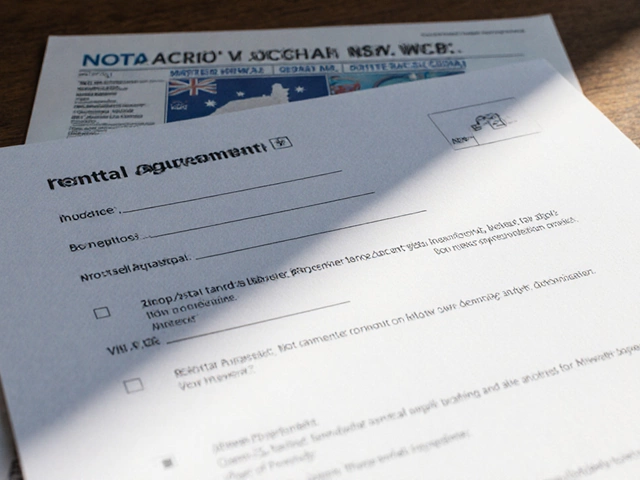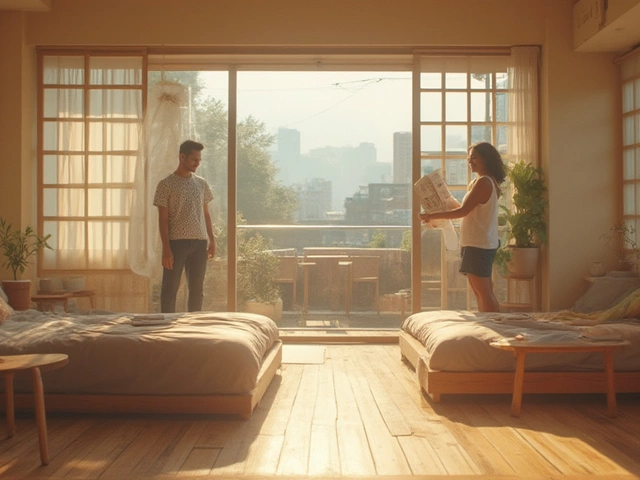If you’re looking to beat inflation, outpace salary growth, and hopefully spend more time at the beach with your dog while your cash generates itself, rental property is pretty hard to ignore. But ‘property’ is a huge bucket. There’s a world of difference between a tired bedsit in the suburbs, a gleaming CBD apartment, and a weather-beaten miner’s cottage in a remote town. So: what type of rental property is actually putting more money into Aussie pockets in 2025? We’ve all heard contradictory stories. Someone’s mate got rich flipping a penthouse, some uncle lost a fortune in a regional town. The truth’s less dramatic, but way more useful.
The Power Players: Comparing Rental Property Types in 2025
Let’s lay out the contenders. The rental property universe splits into a few main camps: houses, apartments, townhouses, and the short-term/holiday segment (think Airbnb). Each has its own fan club. Investors chew over old calculators trying to pick which has the best return, lowest maintenance, and least amount of Sunday-morning headaches.
We see houses still dominating the market, especially detached family homes with a bit of land. In cities like Adelaide, they tend to attract long-term tenants – think growing families desperate for a backyard and decent schools. Why does this matter? Tenant stability means less vacancy, less time and money spent relisting, and less rent lost in between. On the other hand, apartments (especially in CBDs) are satchels packed with investors. They’re usually bought for the rental yield, with hopes of capital growth on the side. Apartments often pull in younger renters or downsizers who want to be close to work, universities, and coffee. However, body corporate fees are a reality check – they can eat into your returns if you’re not careful.
Townhouses sit in this interesting, sometimes-overlooked middle ground. You get a bit of space but not the maintenance headaches of a full block. For singles or couples who’ve outgrown the one-bedroom lifestyle but aren’t up for mowing lawns twice a week, they’re popular. Some data shows townhouse rents and yields are rising faster in fringe suburbs where apartments haven’t yet arrived in full force.
And then, the wild card: short-term rentals. In 2025, this market is a battleground thanks to shifting laws, Airbnb regulation, and wild swings between feast and famine during school holidays or tourist seasons. On a good month, the cash flow is incredible. But the churn of cleaners, keys, guest complaints, and marketing? Some folks thrive on it. Others are ready to scream. Plus, councils in places like Melbourne and Sydney keep changing the goalposts with new taxes and rules. In regional holiday towns, there’s sometimes backlash about local housing shortages. It can be win big, or lose big.
So, which is actually on top for pure profit? The answer often depends on what you want: cash in the pocket now (rental yield), or value growth (capital gains) later. Houses in growth areas often win the long-term prize. Apartments can offer flashy yields, but sometimes stand still in value. Short-term lets make sense for people ready to manage a real business, not a passive investment. Want some hard numbers? Here’s a fresh look at Australian rental yields for property types in early 2025:
| Property Type | Average Gross Rental Yield (%) | Trend from 2024 |
|---|---|---|
| Houses (Metro) | 3.7% | +0.3% |
| Apartments (Metro) | 4.4% | +0.6% |
| Townhouses (Metro/Suburb) | 4.1% | +0.4% |
| Short-term/Holiday | 6.8%-12% | Variable |
The averages don’t tell you about vacancy rates or costs, but they’re mouthwatering compared to stuck-in-the-bank savings. The catch? Higher yield properties often come with higher risk or more management headaches. If you want bulletproof safety, the returns go down.
Understanding Rental Yields, Hidden Costs, and Practical Profit
You’d think high rent or a packed bookings calendar equals big profits. But the elephant in the room is always costs. Savvy landlords look for ways to bump up the ‘net yield.’ That’s what’s left after you’ve paid all the bills: council rates, insurance, fix-it-jobs for leaking taps, property management fees, and those sneaky expenses that turn up like late party guests.
Let’s run through some numbers most people forget. For houses, you’ve got bigger maintenance costs. Even in cities with strong tenant demand (think: Adelaide or Brisbane’s north), a busted fence here or ancient plumbing there adds up quick. Apartments, while they may save you from lawn mowing, punch back with body corporate/strata fees – in some Sydney towers I’ve seen them reach almost $10,000 a year, especially if your building hosts a pool or a gym. Then there’s insurance. Did you know landlord insurance for a standalone house in South Australia can sometimes cost less than apartment insurance? That’s because strata can add extras for common areas, lifts or public liability. Townhouses are cheaper to run, but some have hidden ‘community title’ fees nobody tells you about at the first inspection.
- Profitable rental property tip: always get the last two years’ worth of bills from the seller. It’s your sneak peek into the real costs.
- Don’t forget the vacancy factor. Even the best property sits empty sometimes. In regional towns when the mines slow down, vacancy rates climb and investors panic.
- Short-term properties? Expect to spend more: professional cleaning between guests (weekly, not yearly), higher wear on furniture, and big insurance premiums. Think 20-30% higher running costs, easy.
Look, the most profitable property often is less about the max rent on paper, and more about how little you leak out in costs and how much you can keep it consistently rented. In Adelaide in early 2025, I’ve seen middle-ring houses fetch less per week than city units, but with 99% occupancy, good tenants, and lower maintenance spend, those suburbs quietly outperform.

The Regional vs. Metro Debate: Where Do the Best Investment Opportunities Live?
The big debate isn’t just ‘apartment vs house’ – it’s also ‘city vs country’. Since the pandemic, regional areas clocked in some massive growth, with the classic tree-change and sea-change . Now, things are settling. Some cool regional towns are holding their value, while others with single-industry economies (hello, mining towns) have swung from feast to famine.
Metro areas like Adelaide are less volatile. Even when things get tough, people need to be near work, schools, and health care. Vacancy rates in good metro suburbs can sit below 2%. That means, as a landlord, you can practically pick your tenants. In contrast, a gorgeous house three hours out of town might earn twice the rent in January, but sit empty from May to September, especially if it’s ski, surf, or festival dependent.
Check out these figures for current vacancy and rental yield in selected areas (March 2025):
| Location | House Yield | Apartment Yield | Vacancy Rate |
|---|---|---|---|
| Adelaide Inner | 3.8% | 4.2% | 1.4% |
| Melbourne Inner | 2.9% | 3.5% | 2.7% |
| Regional SA (Victor Harbor) | 4.7% | 5.2% | 3.9% |
| Mining Towns (Roxby Downs) | 6.5% | N/A | 6.8% |
The catch? Mining towns can implode overnight when resources dry up—those fat yields can vanish, and your property value may tank for years. Think hard before betting the farm on boom-bust regions.
If you want more predictability, major suburb or metro homes in places like Adelaide, Hobart, or Brisbane’s less flashy suburbs still offer solid growth with decent yield. There’s less excitement, but fewer horror stories and a better shot at a steady long-term win.
Short-term vs. Long-term Rentals: Who Actually Wins the Cash Race?
Instagram makes it look easy: beach house, bookings rolling in, cocktails on the deck. Real-life can be way messier. Short-term letting seems like a cash fountain. In reality, a handful of hosts feast, the rest work really hard for inconsistent returns. Holiday rentals in Gold Coast or Victor Harbor that once booked out year-round now swing from win to thin with new competition and more paperwork. Split stays and empty weeks are more common post-pandemic.
- If your property is in a high-demand, unique spot – think oceanfront, CBD penthouse, near a major hospital/uni – you can potentially double or triple the returns of a normal rental.
- But, you’ll work for it: you’ll answer frantic guest calls about lost wifi passwords, or whether the hot water turns on counterclockwise. Every positive review boosts your ranking, but one half-empty shampoo bottle left by mistake can crater your average rating.
- Short-term rentals also face more regulation. South Australia introduced new registration rules in early 2025 – expect more to follow after complaints about housing shortages in holiday hot spots.
- Insurance for short stays is tricky and costs more, since risks are greater (broken beds, party damage, people falling off balconies on weekend benders). Get the right policy or risk a wipeout you won’t soon forget.
In 2025, average gross yields on successful short-term rentals can reach anywhere from 8% in competitive city suburbs to a stonking 12% in tourist magnets – but these numbers fluctuate hard. In tough months, some properties barely break even, and you might get stuck paying for utilities and cleaning even when you’re empty.
Compare that with long-term rentals. You get less per week, sure, but you sign up solid tenants for 12 months or more, and you hardly ever have to text your property manager. Expenses drop too—no weekly cleaning, less admin. For most investors who want hands-off profit, long-term rentals (especially houses or townhouses in stable suburbs) are still where the money quietly builds up.

Tips for Choosing the Most Profitable Rental Property in 2025
There’s no ‘one size fits all.’ What works for me in Adelaide—a solid double brick house with space for Rufus (my dog) and some loyal tenants—might not suit you scanning the CBD towers or dreaming of being an Airbnb host in Byron. But, to steer clear of the traps and boost your profit odds, here are some tips that hold up in 2025:
- Spot rising suburbs with high prospective rent but still affordable buy-in prices. Look for places with new job growth (hospitals, tech hubs, big schools) rather than just flashy cafes or new train stations.
- Always dig deeper than the agent’s brochure. Check not just weekly rents but actual average days vacant each year. A $30 drop per week is nothing compared to a property vacant for a month every year.
- For apartments, grill body corporates about future upgrades. A building with lift issues or upcoming cladding replacement can kill your cash flow for years.
- If you’re considering short-term letting, do a dry run: price out utilities, cleaning, and Airbnb’s host fees. Be honest about whether you want to answer 2am texts about missing Sky remotes.
- Calculator time. Always use net yield, not just the gross yield, when comparing. Take the annual rent, subtract every expense you can think of (rates, insurance, body corp, agent fees, and a decent repair fund), then divide that by the property’s price. Only then do you see what’s real.
- Talk to real property managers—not just agents selling a dream. Someone who manages 80 doors in the area knows what rents fast, what sits, and what returns the most after costs.
- Finally: Don’t bet your whole future on markets with wild swings. High yields in tiny mining outposts are tempting, but when the wheels fall off, they fall off hard. Balance risk and return, and plan to own through some flat years.
In the end, profitable property is rarely sexy. It’s reliable, easy to rent, affordable to keep up, and occupied more often than not. In 2025, that’s more likely to be a suburban house or townhouse in a growing area, rather than the flashiest apartment or luckiest holiday let. Think steady cash, not headlines. The real millionaires are quietly counting rent checks while the rest chase the next shiny thing.





